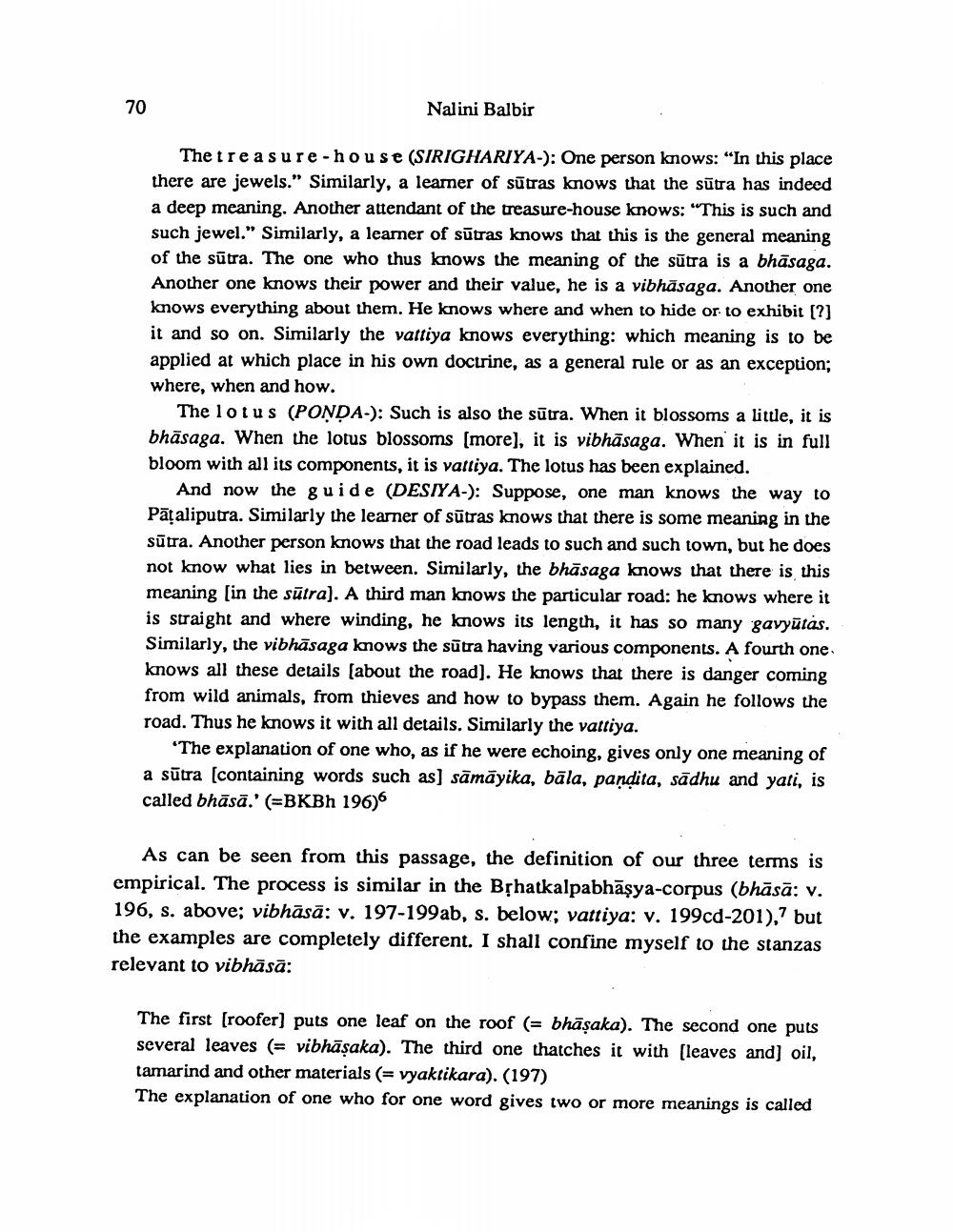Book Title: Jaina Exegetical Terminology Pk Vibhasa Detailed Exposition Author(s): Nalini Balbir Publisher: Nalini Balbir View full book textPage 4
________________ Nalini Balbir The treasure-house (SIRIGHARIYA-): One person knows: "In this place there are jewels." Similarly, a learner of sūtras knows that the sūtra has indeed a deep meaning. Another attendant of the treasure-house knows: "This is such and such jewel." Similarly, a learner of sūtras knows that this is the general meaning of the sūtra. The one who thus knows the meaning of the sūtra is a bhāsaga. Another one knows their power and their value, he is a vibhāsaga. Another one knows everything about them. He knows where and when to hide or to exhibit [?] it and so on. Similarly the valtiya knows everything: which meaning is to be applied at which place in his own doctrine, as a general rule or as an exception; where, when and how. The lotus (PONDA-): Such is also the sūtra. When it blossoms a little, it is bhāsaga. When the lotus blossoms (more), it is vibhāsaga. When it is in full bloom with all its components, it is vattiya. The lotus has been explained. And now the guide (DESIYA-): Suppose, one man knows the way to Pāšaliputra. Similarly the learner of sūtras knows that there is some meaning in the sūtra. Another person knows that the road leads to such and such town, but he does not know what lies in between. Similarly, the bhāsaga knows that there is this meaning in the sutra). A third man knows the particular road: he knows where it is straight and where winding, he knows its length, it has so many gavyūtas. Similarly, the vibhāsaga knows the sūtra having various components. A fourth one knows all these details about the road). He knows that there is danger coming from wild animals, from thieves and how to bypass them. Again he follows the road. Thus he knows it with all details. Similarly the vattiya. 'The explanation of one who, as if he were echoing, gives only one meaning of a sūtra (containing words such as] sāmāyika, bāla, pandita, sādhu and yati, is called bhāsā.' (=BKBh 196) As can be seen from this passage, the definition of our three terms is empirical. The process is similar in the Bșhatkalpabhāşya-corpus (bhāsā: v. 196, s. above; vibhāsā: v. 197-199ab, s. below; vattiya: v. 199cd-201),? but the examples are completely different. I shall confine myself to the stanzas relevant to vibhāsā: The first (roofer) puts one leaf on the roof (= bhāşaka). The second one puts several leaves (= vibhāşaka). The third one thatches it with (leaves and) oil, tamarind and other materials (= vyaktikara). (197) The explanation of one who for one word gives two or more meanings is calledPage Navigation
1 2 3 4 5 6 7 8 9 10 11 12 13 14 15 16 17 18
